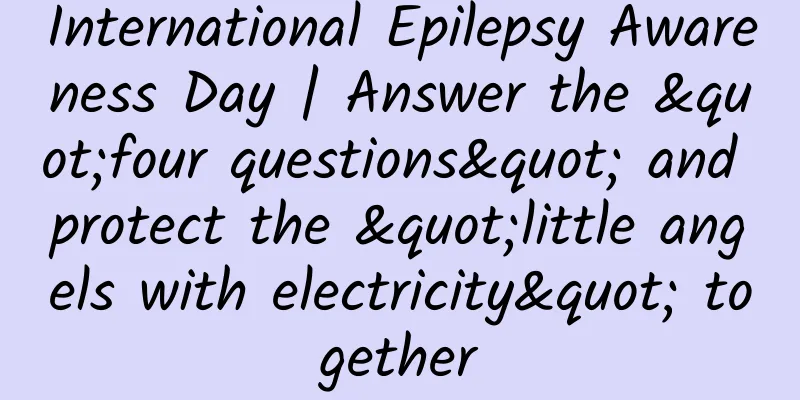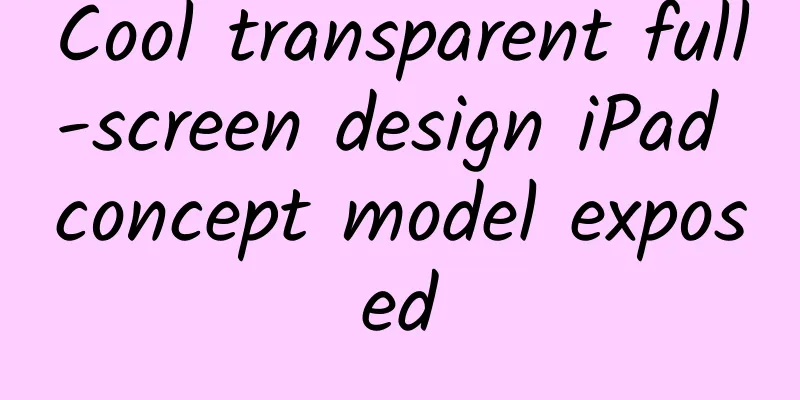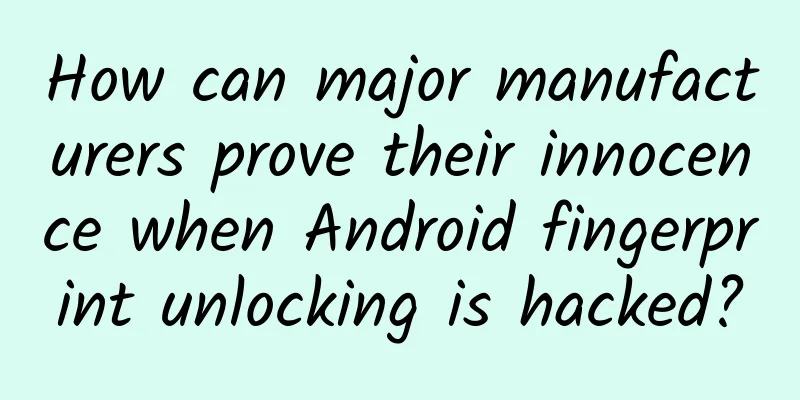International Epilepsy Awareness Day | Answer the "four questions" and protect the "little angels with electricity" together

|
June 28 International Epilepsy Awareness Day Epilepsy is a common disease of the children's nervous system. It is caused by abnormal excessive synchronous discharge of brain neurons due to various reasons, which leads to sudden and paroxysmal brain dysfunction. Due to the imperfect development of children's nervous system and high nerve excitability, the peak period of epilepsy is in infancy. What are the symptoms of childhood epilepsy? Is there a reliable diagnostic method? How should drugs be used safely and reasonably? Yaowa has arranged four questions for you. Use "addition, subtraction, multiplication and division" skillfully to protect the "little angel with electricity" together! Do addition, be good at observation, and answer the "recognition questions" well The clinical manifestations of childhood epilepsy are complex and varied. The most common epileptic seizure in life is a major seizure, that is, the child will have obvious symptoms, such as suddenly fainting on the ground, loss of consciousness, and then the whole body stiffens and convulses, the eyes roll up, and foams at the mouth. Of course, some atypical seizure symptoms may also appear, such as suddenly becoming dazed, drooling, swallowing, sucking, or nodding frequently while playing. These actions only last for a few seconds, and the child wakes up immediately after the attack, so they are often easily overlooked. Epileptic seizures can be large or small, dynamic or static, and we must strengthen observation, pay more attention to these "small movements", and answer the "identification questions" well. Do subtraction, keep the real cause, and answer the "diagnostic question" well There are many types of childhood epilepsy and they vary greatly from person to person. The diversity of symptoms also makes diagnosis more difficult. If the diagnosis is not made early, repeated epileptic seizures can easily cause secondary damage to the child's brain, which may lead to cerebral palsy, intellectual decline, etc. 1. Medical history is the basis Parents should collect information and inform the doctor in detail about the child's current medical history (such as age of first seizure, frequency of seizures, symptoms, state of consciousness, duration), past medical history (whether there is a history of high fever convulsions, brain injury), and family history (whether there is a hereditary condition) to ensure the completeness of the medical history. 2. Video EEG is an auxiliary It can check whether epileptic waves appear (i.e. epileptic discharges), and is the most important auxiliary means for diagnosing epileptic seizures and determining the type of seizure. In addition, neuroimaging examinations can help discover structural abnormalities in the brain and provide etiology diagnosis for epilepsy, which is of great value; genetic testing can provide reference for relevant treatment plans. These methods are very helpful for later treatment. Only by answering the "diagnostic questions" well and reducing missed diagnoses can epilepsy be better controlled. Do multiplication, increase efficacy, and answer the "medication question" well Anti-epileptic seizure drug treatment is the cornerstone of epilepsy treatment and the first choice for epilepsy. There are many types of anti-epileptic seizure drugs, such as traditional sodium valproate, phenytoin sodium, phenobarbital, carbamazepine; new lamotrigine, levetiracetam, topiramate, perampanel, etc. The mechanism of action of these drugs is complex and they have a great influence on each other, so children's choices are limited. Only by answering the "drug use question" well can the best effect of the drug be exerted. 1. Choose the right dosage form It is recommended that oral liquid preparations such as solutions, syrups, and suspensions be used as the first choice for newborns, infants, and preschoolers. As children grow older and their swallowing function improves, they can gradually use tablets and capsules. For children with poor swallowing function and prone to choking and suffocation, liquid preparations are still the main choice. 2. Individualized treatment dose The drug should be used under the guidance of a doctor starting with a small dose and gradually increased until the attack is controlled or the maximum tolerated dose is reached. Do not increase or decrease the dose at your own discretion during the medication process. 3. Monotherapy is preferred, and combination therapy should be used with caution After the first anti-epileptic drug fails, another anti-epileptic drug can be tried. If the second monotherapy also fails, then combination therapy can be considered. Do not blindly increase the number of drugs to avoid drug interactions, affecting drug efficacy, and increasing adverse reactions. Do division, eliminate risks, and answer the "guardianship question" well Controlling epilepsy symptoms is a long-term battle. The treatment cycle of anti-epileptic drugs is long, and adverse drug reactions are inevitable during use, which also affects treatment compliance and leads to failure of epilepsy control. Therefore, during the treatment process, we must pay attention to the efficacy of the drugs in children, monitor the occurrence of adverse drug reactions, and intervene in time to eliminate them. 1. Start with “quantity” Start with a low dose, increase the dose slowly, and monitor blood drug concentrations when necessary. 2. Do a good job of assessment Before taking the medicine, we should pay attention to the child's medical history, especially mental and cardiovascular diseases. During the medication period, we should have regular follow-up visits to evaluate the child's mental state, liver and kidney function, and adjust the dosage of the medicine in time according to clinical symptoms; individual evaluation should be carried out before stopping the medicine. 3. Improve records Take medication on time and in the right amount. If conditions permit, use mobile phones and video recording equipment to accurately record the form and frequency of epileptic seizures, providing a basis for clinicians to formulate and adjust treatment plans. The treatment of childhood epilepsy should be started early rather than late. Be careful in "addition" and pay attention to identification; be precise in "subtraction" and assist in diagnosis; be good at "multiplication" and use medications rationally; and be brave in "division" and provide safe monitoring. |
<<: Sea otters: Not only cute, but also clean marine forest heroes
>>: The world's first, 1935.3 grams! How significant is the "digging" on the far side of the moon?
Recommend
The rivers in the Arctic have turned into "orange juice", but it's even more sour than orange juice! The fish are dying of sourness
Image source: medium Alaska is a place with magni...
Samsung is at most "stepping down" from the altar, not falling into the abyss
Recently, many people have been pessimistic about...
Can the new Honda VEZEL, which is a new wine in an old bottle, be brought to China in its original form?
In the automotive industry, the production platfo...
The best strategy for operating WeChat circles! Tips for operating WeChat circles!
The following content comes from the practical sh...
A niche and blue ocean sunshine analysis project
Today I will talk about a niche and blue ocean pr...
Advertising placement: An optimizer’s guide to avoiding pitfalls!
Working in the optimization industry, I deal with...
29 pictures to teach you how to improve APP conversion rate!
This reading note will be divided into several se...
Tencent joins! WeChat supports digital RMB payment: two steps to activate
On January 6, according to domestic media reports...
There are so many taboos for heart disease, but the three most critical ones are often ignored by many people.
A dozen years ago, putting a stent in the heart w...
Shared bicycles are in deep trouble, and shared car platforms have also collapsed one after another. Could it be that they have encountered a false trend?
Shared bikes are known as China's new four gr...
12 historical documents prove that China was the first to discover and name the South China Sea Islands
As early as the Qin and Han dynasties more than 2...
Nokia is back, are Nokia fans ready?
[[125942]] Although Nokia's voice in the cons...
The mini-programs are 2 years old and the mini-games are 1 year old, what should we expect on WeChat’s 8th anniversary?
There are still 14 days left until 2019, and WeCh...
Mozilla: We have an advantage over Microsoft in the mobile operating system market
Mozilla is an open source Internet software compa...
Beware of infection! China CDC's urgent reminder
With the arrival of the May Day holiday in 2023, ...









